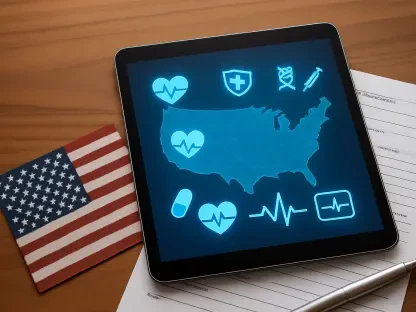In recent years, the integration of telehealth into medical practice has revolutionized how patients receive care, particularly for those battling advanced diseases like non-small cell lung cancer (NSCLC). A comparative study analyzing the outcomes between in-person and secure video clinical visits for early palliative care has shed light on the potential of telehealth to bridge access gaps. Despite strong national guidelines urging the early incorporation of palliative care into the treatment regimen for patients with poor prognoses, significant barriers hinder widespread implementation. These obstacles include a shortage of healthcare professionals trained in palliative care, persistent public misconceptions, and challenges related to insurance reimbursement.
Study Overview
A landmark study led by Drs. Joseph A. Greer and Jennifer S. Temel aimed to evaluate whether telehealth could deliver early palliative care with the same efficacy as traditional in-person visits for patients with advanced NSCLC. The study involved a substantial sample size of 1,250 patients, divided into two groups: one receiving in-person palliative care consultations and the other engaging in secure video calls every four weeks. Each session covered crucial aspects of patient care, including the management of physical symptoms, psychological well-being, coping mechanisms, and the patients’ understanding of their prognosis and treatment options.
The study further compounded its depth by involving an additional cohort of 548 caregivers, whose quality of life was also assessed to understand the broader impact of palliative care delivery models. The goal was to provide a holistic view of how both patients and their support networks fared under different modes of care delivery and to measure the nuances that might affect patient and caregiver satisfaction and overall quality of life.
Study Results
The outcomes of the study after six months were enlightening, revealing that both patient groups experienced equivalent improvements in their quality of life. These enhancements included better appetite, reduced pain, and improved mental clarity, indicating that telehealth could effectively mirror the results of in-person care. Additionally, the management of depression and anxiety, the effectiveness of coping skills, and patients’ perceptions concerning treatment goals and cancer curability showed no significant differences between the two groups.
Caregiver satisfaction, a vital component of the study, also displayed no marked differences, despite a slightly lower participation rate in telehealth sessions compared to in-person visits. The equivalence in outcomes underscores the viability of telehealth as a medium for delivering palliative care without compromising on the quality of care provided to either patients or caregivers.
Impact on Patient Care
The study strongly supports the idea that telehealth can deliver palliative care with the same high standards as in-person consultations, which is particularly beneficial for expanding access to this crucial service. Many patients face logistical challenges, such as long travel distances or limited financial resources, which can hinder their ability to attend frequent in-person visits. The implementation of telehealth alleviates these burdens, providing a more accessible and convenient option for patients and caregivers alike.
Initially, there was some hesitation among patients when first introduced to telehealth platforms, mainly due to unfamiliarity with the technology. However, with minimal training, patients quickly adapted and began to recognize and appreciate the reduced need for travel, which consequently saved them time and money. This adaptability underscores the potential for telehealth to become a permanent fixture in palliative care.
Equivalence in Care Quality
One of the critical findings from the study was the consistency in the quality of palliative care discussions across both telehealth and in-person consultations. Clinicians were able to maintain identical rates of essential conversations regarding symptom management, coping strategies, and rapport with family members. This consistency ensures that patient satisfaction remained high, regardless of the mode of delivery, thereby reinforcing telehealth’s capacity to replicate in-person care’s quality effectively.
Such fidelity across different care delivery modalities is crucial for broad acceptance of telehealth in the healthcare community. The study instilled confidence in stakeholders that telehealth can uphold the rigorous standards necessary for effective palliative care, which in turn, can help in its wider adoption and integration into standard medical practice.
Telehealth Accessibility Advantages
The study highlighted the significant advantage telehealth provides in terms of accessibility, particularly for patients residing in rural areas who often face long travel times to reach medical facilities. Nearly half of the study’s participants reported traveling over an hour for in-person clinic visits, a substantial burden that is considerably lightened by the availability of virtual consultations.
For older patients, those with frailties, or those with compromised immune systems, telehealth presents an invaluable option by minimizing physical exertion and reducing exposure risks. By offering palliative care through secure video calls, these patients can receive the same level of care without the associated challenges of traveling, thus enhancing their overall healthcare experience and compliance.
Training Oncologists for Primary Palliative Care
One innovative approach under exploration is the training of oncologists in the fundamental principles of primary palliative care. This model aims to integrate essential palliative care elements systematically into oncology practice, addressing the existing shortage of palliative care specialists. By equipping oncologists with palliative care skills, the healthcare system can provide comprehensive care that encompasses both curative and comfort-oriented strategies, benefiting patient outcomes holistically.
Training oncologists in primary palliative care also ensures that more patients can receive timely and appropriate palliative interventions, regardless of the availability of specialized palliative care providers. This integrated approach can significantly enhance the overall quality of care and ensure that palliative care becomes an inherent part of the cancer treatment continuum.
Reducing Systemic Barriers
Systemic barriers, such as limited referral resources and complicated insurance reimbursement policies, often hinder the broader implementation of palliative care services. However, telehealth emerges as a practical solution to these issues, offering numerous advantages that can streamline and improve care delivery. For instance, telehealth consultations can save clinicians roughly 10 minutes per visit, an accumulation that translates into more efficient use of limited time and resources.
Moreover, by maintaining the quality of care while reducing logistical challenges, telehealth presents a compelling argument for its widespread adoption within the healthcare system. Its potential to simplify the referral process and ease the reimbursement landscape makes it an attractive option for clinicians, patients, and policymakers alike.
Expanding Telehealth to Underserved Groups
A particular point of interest from the study is its patient demographic, which primarily included elderly, White individuals. This demographic limitation suggests that further analysis is needed to evaluate telehealth’s effectiveness across more diverse populations. Ongoing sub-group analyses are expected to offer insights into how telehealth can serve minority and younger patients effectively, ensuring that all groups have equitable access to quality palliative care.
Expanding the reach of telehealth to underserved groups involves understanding and addressing the unique needs and preferences of these populations. By tailoring telehealth services to accommodate various demographic factors, the healthcare system can create more inclusive and effective care models that cater to a broader patient base.
Policy and Legislative Implications
In recent years, the integration of telehealth into medical practice has significantly changed how patients receive care, especially those with advanced diseases like non-small cell lung cancer (NSCLC). A comparative study focusing on the outcomes between in-person and secure video clinical visits for early palliative care has revealed the potential of telehealth in bridging access gaps. Despite strong national guidelines advocating the early inclusion of palliative care for patients with poor prognoses, several barriers hinder its widespread adoption. These include a shortage of healthcare professionals trained in palliative care, persistent public misconceptions about what palliative care entails, and difficulties related to insurance reimbursement.
Telehealth can effectively address some of these obstacles by enabling virtual consultations, thus overcoming geographical barriers and improving access to specialized care. Moreover, telehealth can facilitate timely intervention, which is crucial for patients with severe illnesses. The use of secure video visits ensures that patient confidentiality and the quality of care are maintained. As the healthcare landscape evolves, the role of telehealth in providing comprehensive, early palliative care is becoming increasingly crucial, highlighting the need for policy adjustments to support its broader implementation.









